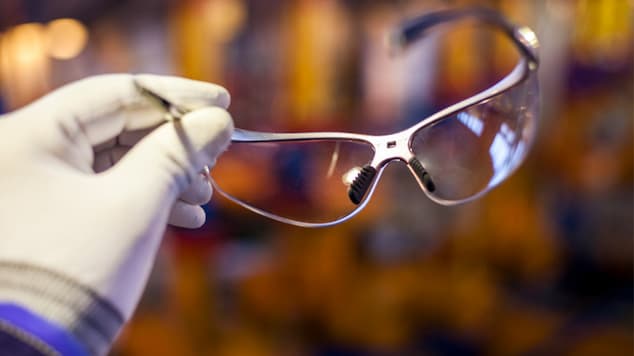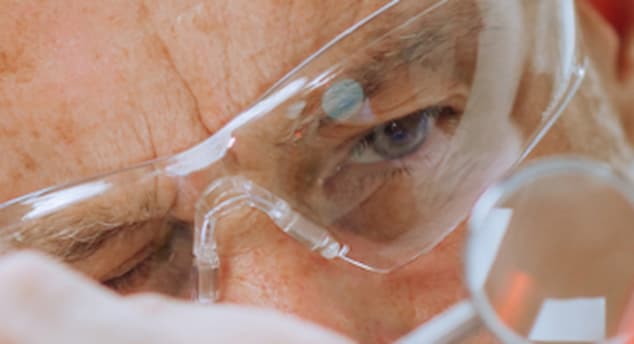Contents
Are your eyes well protected in the dynamic world of healthcare? Medical safety glasses keep you safe from splashes, airborne particles, and hazardous chemicals that you, as a healthcare worker, come across daily.
Modern glasses serve more than just the ordinary precautions. Today, you get more than straightforward eye shields as they are made of advanced materials and designed to feel comfortable even on a long day. With smart technology popping up everywhere, medical glasses are starting to evolve, too. Standards and breakthroughs in eye protection are changing, parallel with the ever-changing demands of healthcare.
Why Is Eye Protection Non-Negotiable?

Eye protection is a must-have in health facilities due to the daily exposure to hazardous substances. Medical professionals are always at risk of chemical splashes, infectious bodily fluids, airborne particles, and debris. When in direct contact, they are capable of causing irritation and infection, and sometimes long-term damage.
The mucous membranes in the eyes are vulnerable to pathogens such as RSV and SARS and become a common entry portal for the transmission of diseases. Even the slightest particle coming from the patient can cause serious complications. Having well-designed and durable medical protective glasses can help prevent the majority of injuries occurring in the workplace.
Protective eyewear in healthcare is not a matter of choice; it forms part of daily routine personal protective equipment and serves as vital protection for future well-being.
What to Look for in Medical Safety Glasses
Medical eye protection glasses should meet Australian and New Zealand Standards for guaranteed effective protection. Look for the primary standards:
- AS/NZS 1337.1: This standard covers non-prescription protection for the eyes and face. Their purpose is to protect healthcare workers and provide consistent durability and high-definition optics for healthcare environments.
- AS/NZS 1337.6: This standard applies particularly to prescription safety eyewear. Their purpose is to ensure that protective glasses offer both vision correction and protection.
While safety is the primary concern in medical goggles, they must also offer comfort for long shifts. Look for features like adjustable nose pads for a customised fit, anti-fog coatings, and scratch-resistant lenses that hold up better over time. Opt for side shields or wrap-around designs for full protection, easy-to-clean eyewear able to withstand frequent disinfecting and everyday use.
By looking for these features, you can choose healthcare safety glasses that protect you without compromising comfort or visual clarity.
Types of Medical Safety Glasses
Each made to address specific hazards, medical safety glasses come in several forms for different workplace needs in healthcare environments. Here are the main types:
Standard Safety Glasses

Lightweight and comfortable, just like your regular eyewear, but use impact-resistant materials like polycarbonate. They offer basic protection, perfect for general use in clinics and hospitals.
Safety Goggles
Superior to safety glasses, safety goggles provide full eye protection that blocks chemicals, bodily fluids, and airborne particles. They are an ideal option for high-risk procedures and lab work and can be worn over prescription glasses for added safety and comfort.
Prescription Safety Glasses
They are used for both protection and vision correction, making them very suitable for healthcare facilities for precise procedures that require safety and clarity most of the time. In Australia, look for the mark AS/NZS 1337.6 for certified prescription medical protective glasses. You can customise your prescription safety glasses, choose from different frame styles and lens types, including single-vision, bifocal, and multifocal options for different viewing distances.
Radiation Protective Glasses
Radiation-protective glasses, made either from leaded lenses or radiation-resistant coatings, are used to protect the eyes in medical imaging such as X-rays. Most glasses of this kind also have side shields and are made of anti-fog, shatterproof materials. They provide comfort and security for healthcare personnel working in radiology as well as other high-exposure environments.
Face Shields and Full-Face Protection
For full-face protection, covering the eyes, nose, and mouth, opt for face shields. They’re usually used in high-risk procedures and are often combined with safety glasses or goggles for maximum protection.
Innovations and Future Trends
Medical protective glasses are currently evolving thanks to technological developments and sustainability agendas. One of the most advanced trends is smart safety eyewear, featuring heads-up displays, integrated cameras, and real-time alerts. These technologies help surgical teams retrieve patient data and environmental updates without disrupting workflow, while enabling hands-free communication via voice commands or Bluetooth.
Key Lens Innovations:
- Anti-fog coatings for uninterrupted visibility
- Scratch-resistant surface protection for lens integrity
- Transition lenses that adapt to different light settings
- UV protection for field duty or high-exposure scenarios
Sustainability also plays a big part in the future scenario, with manufacturers adopting biodegradable and recyclable materials. You can expect increased personalised eyewear production with the use of waste-reducing 3D printing techniques, and therefore, improved individual comfort and anatomical alignment. Today’s world is encouraging industries to adopt practices for both eye safety and environmental compatibility.
In 2035, medical safety glasses will likely include biometric sensors to detect the user’s state or any sudden changes to the environment, fully included in surgical and remote platforms. Much like other advancements in medical technology, this next generation of protective eyewear is expected to move beyond its purpose. It is set to evolve into an intelligent companion, helping healthcare move through the dynamic clinical environments.
Final Thoughts
In today’s ever-changing medical landscape, healthcare safety glasses are a crucial equipment in safeguarding professionals from all types of health hazards. By understanding their features, types of eyewear, and the latest technologies, healthcare workers can make informed steps for prioritising both comfort and well-being.
As we learn more about advances in materials and innovations, medical safety eyewear is evolving to become smarter, more sustainable, and tailored to individual needs. It is important to read certifications. In this case, certification means high quality and ensures compliance with workplace safety regulations.
Investing in the right protective eyewear is a crucial proactive measure to protect your vision and promote the overall wellness of patients.





Comments are closed.